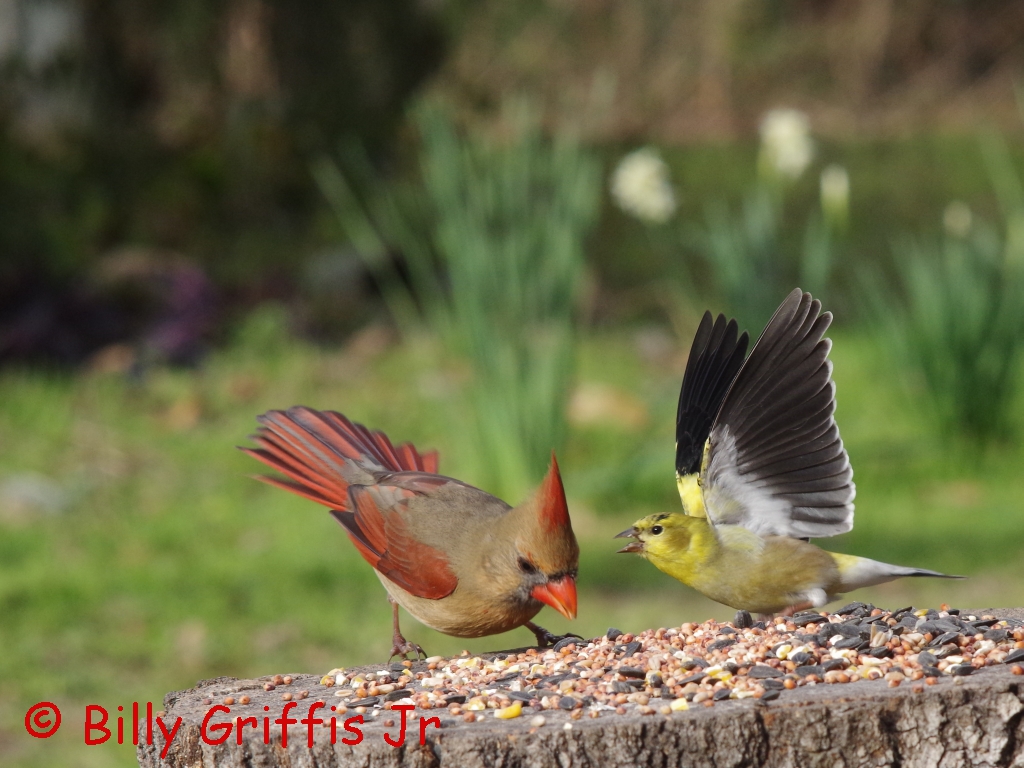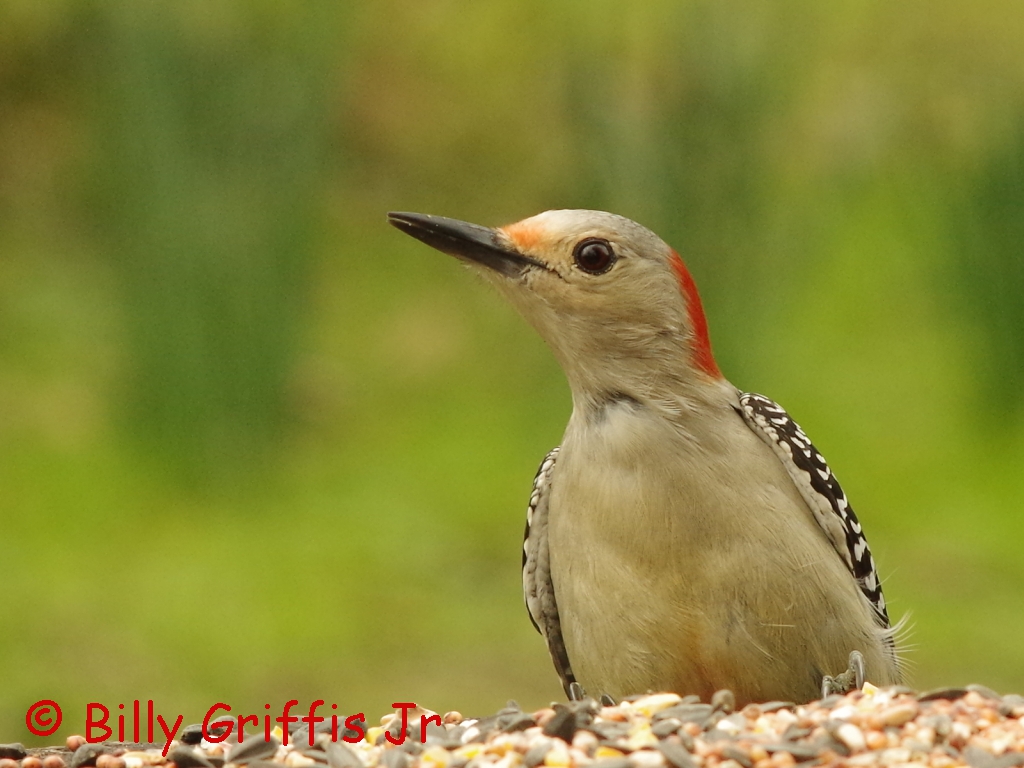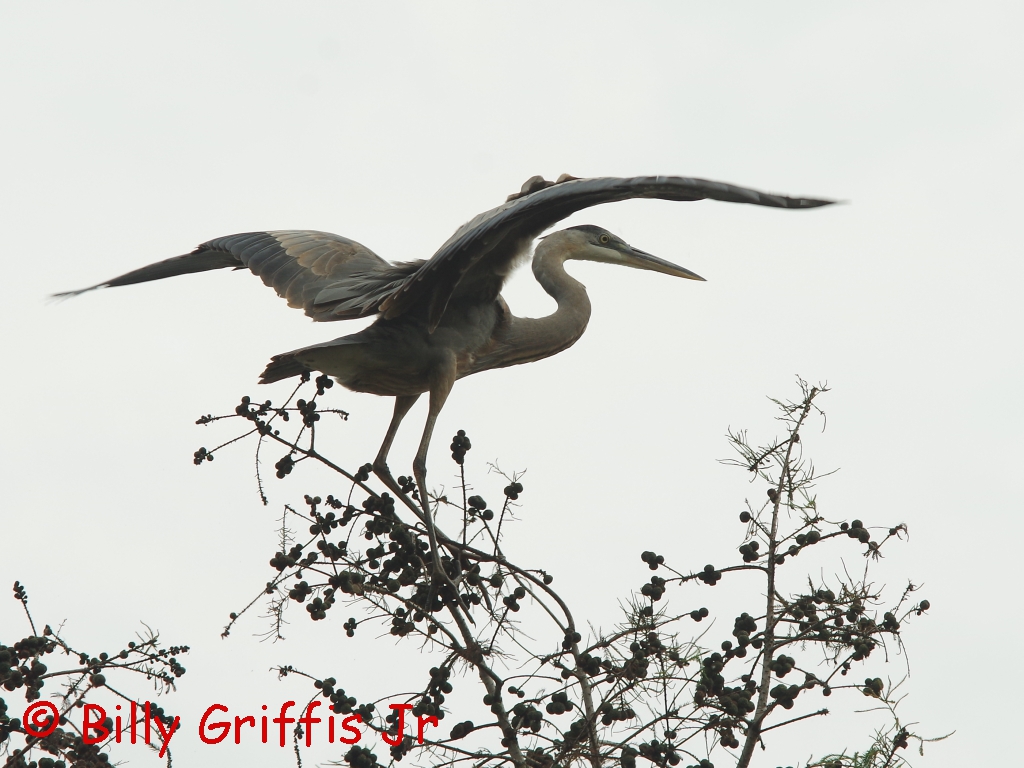I shoot all manual, and manual focus lenses. All mine are older lenses so full auto is not available anyway.
I usually start at ISO 400, f8, and whatever shutter speed I think will get a good exposure. I've been doing this for over 30 years, I can usually look around and gauge my exposure pretty well. I take a test shot and I'm not often more than one stop off.
I rarely shoot faster than 1/500, I try to keep the ISO as low as possible. I'll go up to ISO 1600 if I have to, but I usually stay at 200 or 400 if possible.
Slower shutter speeds do work well, even with flying birds 1/500 will stop most motion. I'll shoot at 1/180 in a heartbeat. With perched birds, I only worry about making sure the shutter speed is high enough to stop my own movements. With a 200mm lens, 1/180 will do the trick. I've shot as low as 1/90 with my 135mm I'm using most of the time now.
This was taken at ISO 800, 1/350. This Goldfinch would try to intimidate every bird that landed on the feeder, I got several shots of him and a couple stopped the wing motion at 1/350. (using a K30 and 135mm lens at f11)

This one was taken at ISO 800, 1/250, probably f11. That's what I've been using for aperture as much as I can get by with.

ISO 200 at 1/500.

I prefer a faster shutter speed if possible, but slower will work quite well, there is no reason to limit yourself to 1/1000, I've gotten loads of nice shots at 1/180. On an overcast morning I'll start at ISO 400, f8, 1/180. I shoot more birds than anything else, shutter speeds of 1/250 or higher will stop everything but their wings if flying. I like 1/500 for in flight shots if I can get it, I love it if I get enough light to go to ISO 200 and 1/1000, but that's not often.
This was taken at ISO200 and 1/250, as the Heron landed.. the only motion is the wingtips. I didn't have time to change ISO and shutter speed...



 Similar Threads
Similar Threads 






 We're trying to freeze the motion, not blur it. Bump your ISO up. 1/1000 should be the starting point.
We're trying to freeze the motion, not blur it. Bump your ISO up. 1/1000 should be the starting point.
















 Post #10 by Imp
Post #10 by Imp








